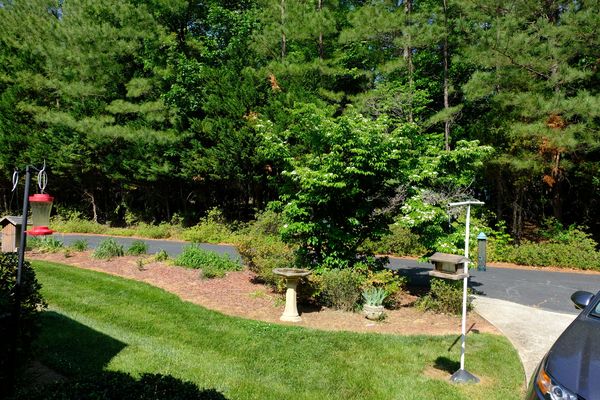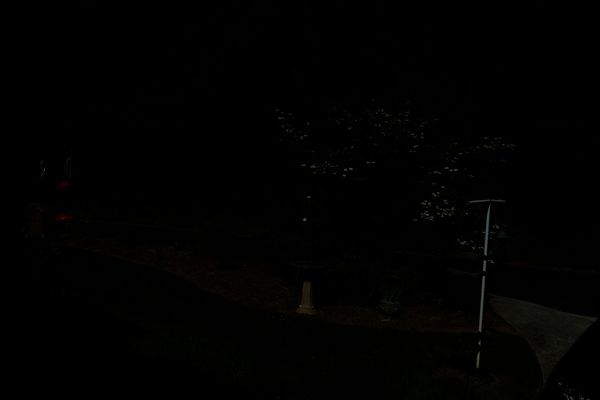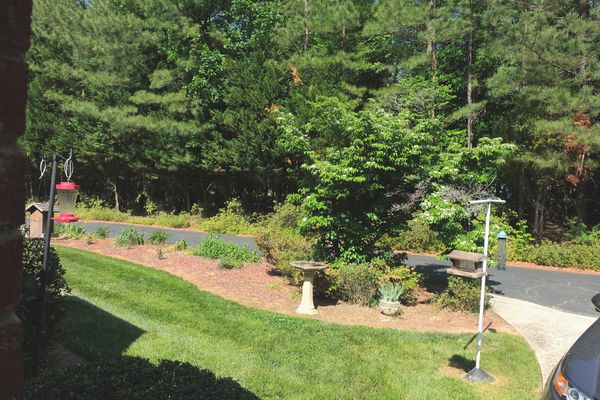ISO-less exposure
May 9, 2018 16:41:27 #
Rongnongno wrote:
Oh, another finally found the quality offered by an invariant sensor. This information is valid only for the latest top of the line cameras. ...
There are very few cameras left that are not invariant.
May 9, 2018 16:43:36 #
selmslie wrote:
You are right but this is only true if you are rec... (show quote)
So you say in writing to the RAW file the camera leave 1 stop head room?
May 9, 2018 16:53:24 #
CatMarley wrote:
I was unaware until recently that the camera expos... (show quote)
The camera's electronics are not contributing any noise. So an image taken with such a camera - ISO Invariant - will have no problem being underexposed up to 5 stops. The image taken at ISO 100 with a D810 and underexposed 5 stops will not look any different than had it been exposed at 2300 ISO.
May 9, 2018 16:58:12 #
BebuLamar wrote:
So you say in writing to the RAW file the camera leave 1 stop head room?
The final stop is only useful if you want to press your luck and want to expose to the right. There is always the danger of blowing one of the color channels, usually the green channel.
I usually treat it as a safety margin from which I can recover highlights if I skate too close to the edge.
May 9, 2018 17:25:04 #
selmslie wrote:
The sensor has only one level of sensitivity. It does not change when you change the ISO.
Changing the ISO setting only causes the camera to suggest or calculate a different exposure in order to find the right the gain or amplification of the signal received by the sensor to produce a "normal" range of values in the raw and JPEG file.
Changing the ISO setting only causes the camera to suggest or calculate a different exposure in order to find the right the gain or amplification of the signal received by the sensor to produce a "normal" range of values in the raw and JPEG file.
OK, I understand that the sensor sensitivity does not change. But Cat says the camera sets the exposure (aperture / shutter) independently from the ISO setting. But in my example, when I changed ISO the camera changed the shutter speed. So the camera, for the same image, gave a different exposure to the sensor depending on ISO setting.
If the ISO change (i.e. the gain change) is applied only after the exposure, as you all seem to imply, why did the camera change the shutter speed when I changed ISO?
Maybe it's time for a beer.....

May 9, 2018 18:06:17 #
Most of the general work I do at the studio is done with a couple of Canon D5 Mark II cameras. Some of the product and architectural work is done with my old Mamiya RZ and Hasselblad gear equipped with a Phase I digital back. The old view camera comes out once in a while with film for jobs that require insane swings and tilts or some of my old and exotic portrait glass.
I suppose I am safe sticking with accurate exposure, attention to dynamic range issues and careful camera work. I seldom need to photograph "a black cat in a coalmine at midnight" kinda things. Things seem the same as they were in film photography in that if you exposed film at outrageous speeds, push processed in "dynamite" developers, there was gonna be some quality compromises- excessive grain, color shifts, lack of shadow detail, crazy contrast etc. The only savior is that nowadays, some of these shortcomings can be somewhat corrected in post processing.
Interesting- some of this sounds like audio and radio technology where amplification at certain stages increases the signal to noise ratios or the difference between amplified microphones and linear amplifiers in radio transmitters. After I retire I have to get back to my amateur radio and audiophile hobbies but by then I may already be dead. For now, I'll stick to photography!
I suppose I am safe sticking with accurate exposure, attention to dynamic range issues and careful camera work. I seldom need to photograph "a black cat in a coalmine at midnight" kinda things. Things seem the same as they were in film photography in that if you exposed film at outrageous speeds, push processed in "dynamite" developers, there was gonna be some quality compromises- excessive grain, color shifts, lack of shadow detail, crazy contrast etc. The only savior is that nowadays, some of these shortcomings can be somewhat corrected in post processing.
Interesting- some of this sounds like audio and radio technology where amplification at certain stages increases the signal to noise ratios or the difference between amplified microphones and linear amplifiers in radio transmitters. After I retire I have to get back to my amateur radio and audiophile hobbies but by then I may already be dead. For now, I'll stick to photography!

May 9, 2018 18:18:24 #
srt101fan wrote:
You say: br "the camera exposes everything ba... (show quote)
You are letting the camera set the shutter speed. But the EXPOSURE is going to be the product of the aperture and the shutter speed. The camera does not shoot the photo at any other ISO but the native ISO of the camera. The ISO you dial in, or set in a menu, is processed in AFTER the shutter closes - it is written into the raw file, and appears in the processing of the jpeg or tiff which is the readable file. In other words the instructions for brightness are added into the raw file after the exposure is made.
May 9, 2018 18:44:22 #
srt101fan wrote:
... If the ISO change (i.e. the gain change) is applied only after the exposure, as you all seem to imply, why did the camera change the shutter speed when I changed ISO?
Maybe it's time for a beer.....
Maybe it's time for a beer.....

The camera reacted to ISO change by changing the exposure in order to make the JPEG come out right.
Maybe something stronger than a beer will help it all makes sense.

May 9, 2018 19:04:59 #
This is the “ISO invariant” discussion (in a slightly different form) which has been discussed many times (just search on ISO invariant or Google the same for a fuller discussion). The fact is that the ISO setting changes one of two things - the analog amplification of the signal from the sensor prior to the digitization by the A/D converter or the digital multiplication of the digitized signal after the A/D, or both. Each manufacturer may use one or both or a combination of these methods, but in general, analog amplification is often used up to ISO 800-1000 and digital multiplication after that. The claim is that with “ISO invariant” cameras (especially later Nikons), you can always expose at base ISO and correct dramatically underexposed shots in post with no ill effects. While you can correct and make usable shots from as much as 5 stops underexposed, when those images are examined carefully, there are, in fact, effects, as shown in the comparative histograms. The net-net is, in my opinion, if your camera is supposedly “ISO invariant”, you’re still better off exposing “correctly”, and if you shoot Canons, or other cameras that are clearly not “ISO invariant”, underexposing and bringing up in post is the kiss of death regarding noise. If anyone is interested in investigating further, I’ll post a detailed 10 page academic reference on the subject or links to previous discussions on the subject.
May 9, 2018 19:10:43 #
selmslie wrote:
The camera reacted to ISO change by changing the exposure in order to make the JPEG come out right.
Maybe something stronger than a beer will help it all makes sense.
Maybe something stronger than a beer will help it all makes sense.

Thanks Scotty, I'm actually having a Scotch but it's not helping!
Maybe I should just quit trying to understand this stuff and just go back to taking pictures....
May 9, 2018 19:17:32 #
CatMarley wrote:
You are letting the camera set the shutter speed. ... (show quote)
Thanks Cat; I guess I need more time to think about this stuff!
May 9, 2018 19:20:29 #
srt101fan wrote:
OK, I understand that the sensor sensitivity does ... (show quote)
The camera records the fact that you changed the ISO and writes that information into the raw file and adjusts the aperture and shutter speed accordingly, and when it processes that raw file into a jpeg, it pushes the brightness based on the ISO you set. But that brightness is not set into a readable file until processing. Which is why, with cameras that are invariant, you can do the same thing independently of the camera by manipulating the raw file in much the same way the camera did when it processed the raw file into a jpeg.
May 9, 2018 19:25:34 #
selmslie wrote:
There are very few cameras left that are not invariant.
In your dreams. Newer cameras may catch up but the majority of folks are not upgrading to something 'just because'. Until there is a significant market roll over (camera replacement) toward the new stuff the greatest majority of cameras are NOT invariant.
This is why we all need to be careful when promoting something that while true does not applies to the great majority of folks.
DR is not the issue but the way this thread is going folks are going to get confused sooner than later.
May 9, 2018 19:32:54 #
Gene51 wrote:
The camera's electronics are not contributing any noise. So an image taken with such a camera - ISO Invariant - will have no problem being underexposed up to 5 stops. The image taken at ISO 100 with a D810 and underexposed 5 stops will not look any different than had it been exposed at 2300 ISO.
And that is an interesting fact. Noise at high ISO is supposed to be partly the effect of electronic "chatter" which is the result of heat and random electrons during the analogue amplification, which lowers the signal to noise ratio, If no analogue amplification occurs at the initial processing of the signal into the raw data, why would you not have a cleaner jpg by using only digital amplification in the Raw to Jpg or tiff conversion?
Even with a higher DR image, I have not seen any increase in noise with the digital amp. Here is another example.
1. properly exposed jpeg
2. underexposed jpeg
3. Jpeg pushed 3 EV from underexposed raw file.
May 9, 2018 19:40:52 #
E.L.. Shapiro wrote:
Extremely interesting! br br For folks like me, w... (show quote)
https://photographylife.com/iso-invariance-explained
An explanation.
If you want to reply, then register here. Registration is free and your account is created instantly, so you can post right away.










